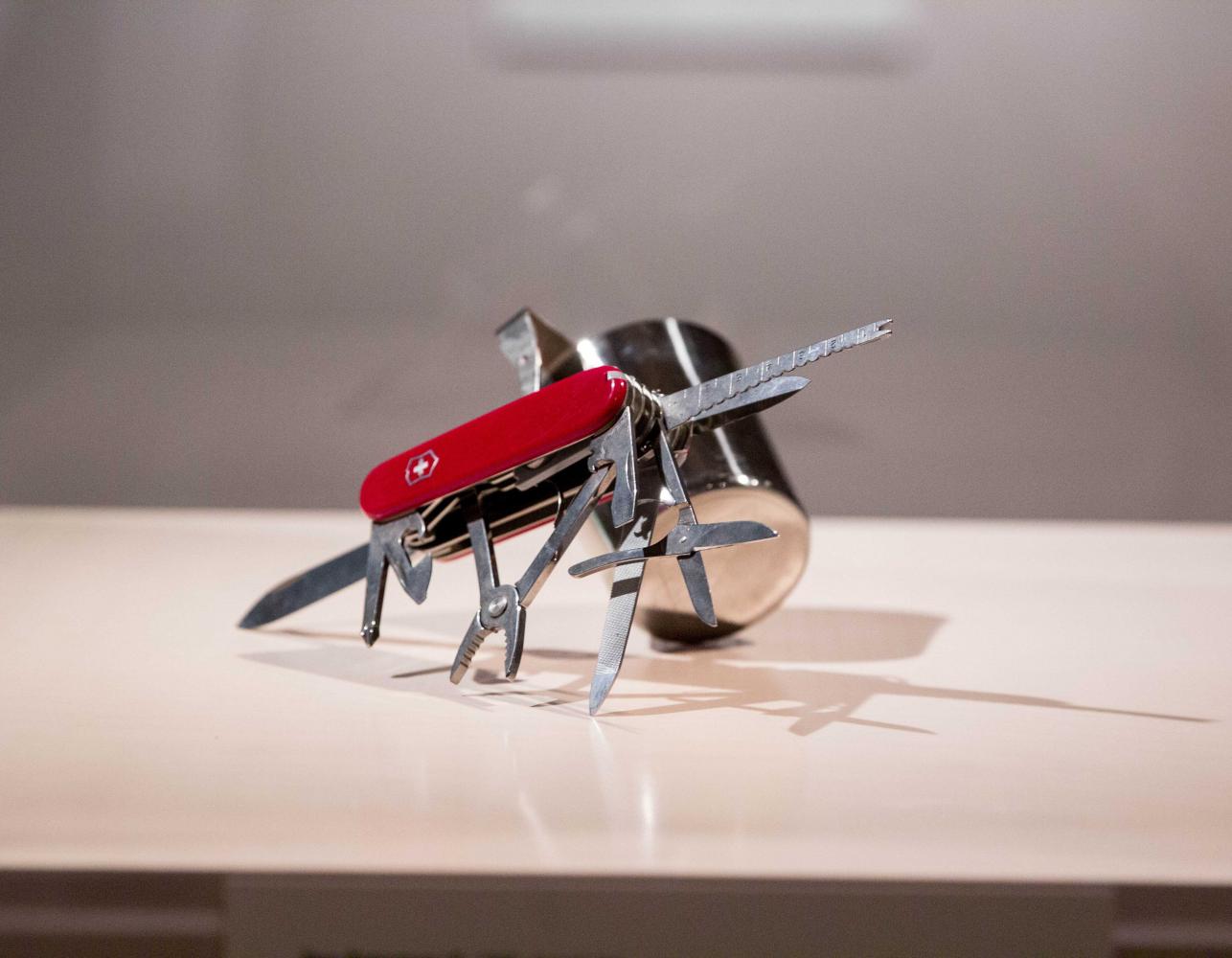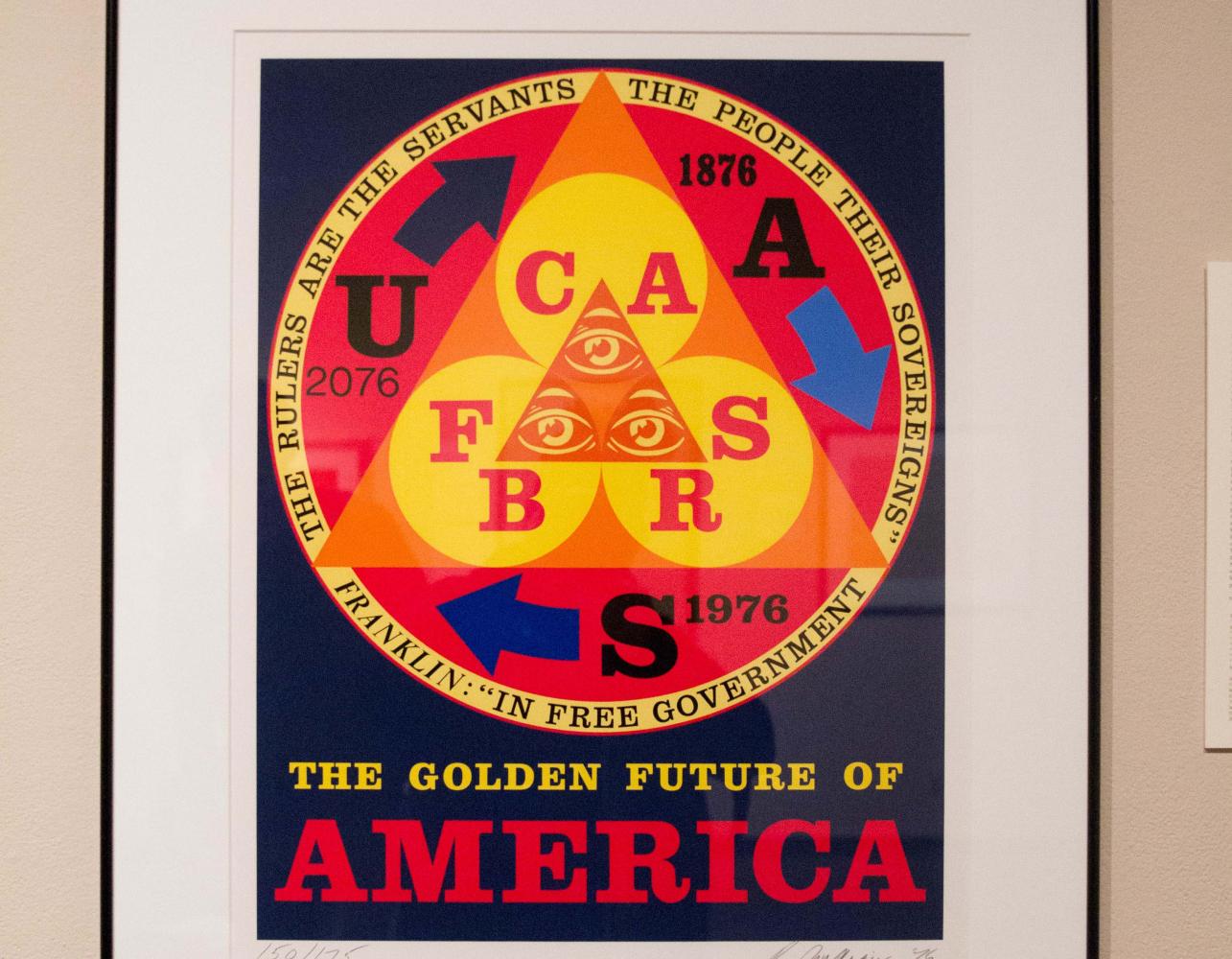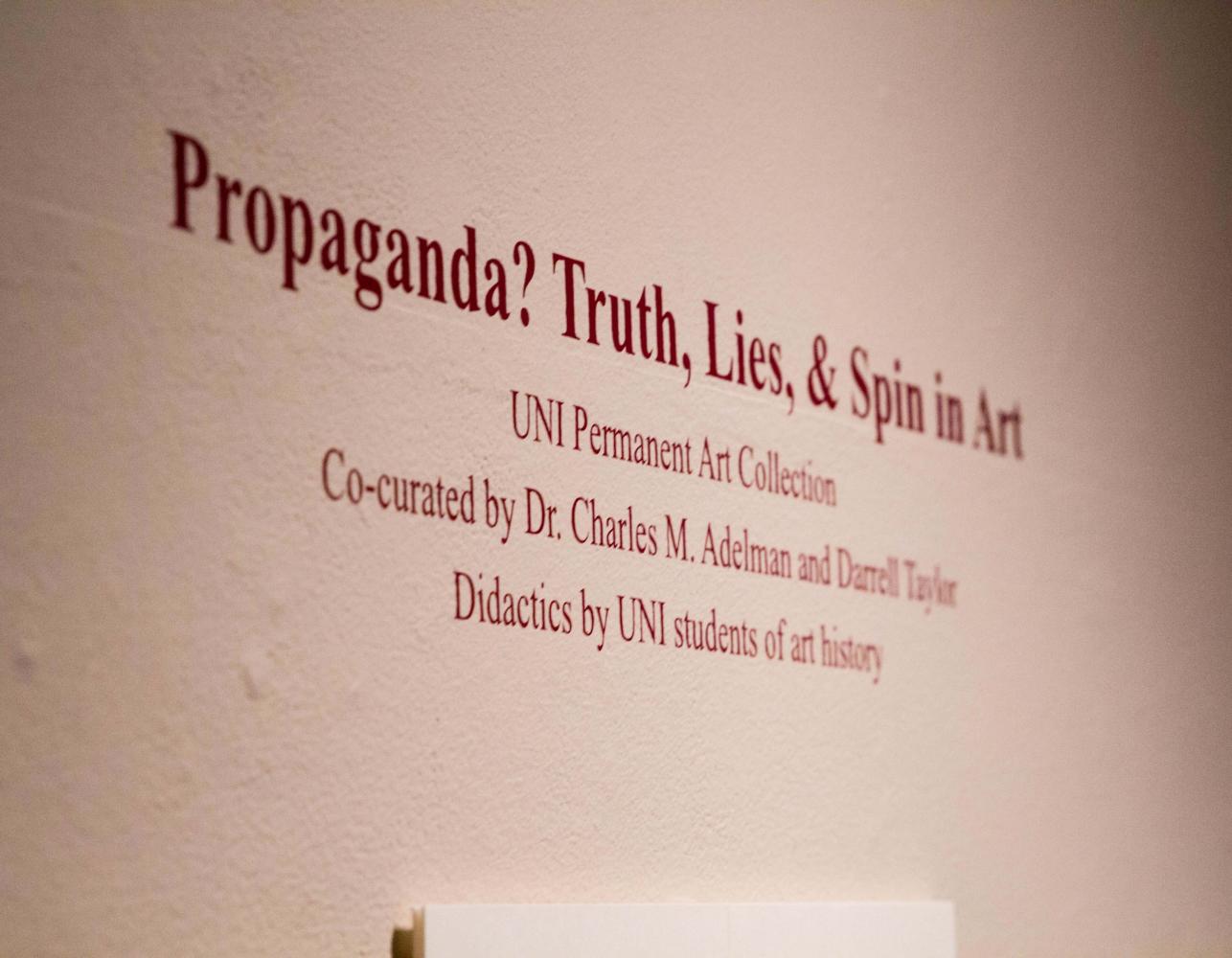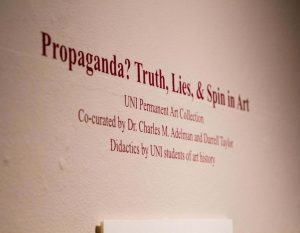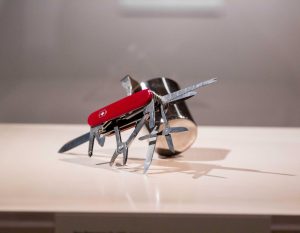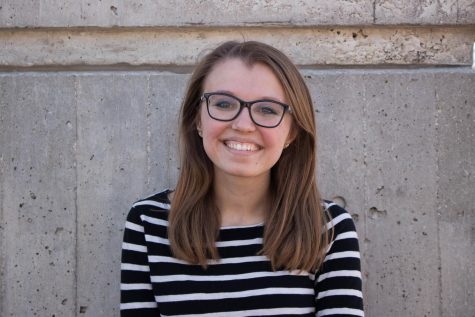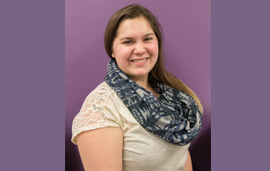Propaganda at UNI
Aug 31, 2017
The UNI Gallery of Art, located in the Kamerick Art Building, is featuring “Propaganda? Truth, Lies and Spin in Art,” an exhibition curated by gallery director Darrell Taylor and Charles Adelman, professor of art history. The exhibition, which was also researched by UNI art history students, will be on display until the end of the semester.
The show features artworks of many different time periods and mediums, such as paintings on canvas and paper, photographs, 3-D objects, prints and drawings. There are works by famous artists, such as contemporary pop artist Robert Indiana, Native American contemporary artist Jaune Quick-to-See Smith and German artist George Grosz, as well as alumni of the UNI Art Department.
All of the works were selected from UNI’s permanent art collection, except for a few photographs that are on loan from professor Jeffrey Byrd, according to the UNI Gallery of Art website.
“Our permanent art collection is nearly 4,000 objects,” Taylor said. “It’s everything from artworks that were made just last year […], and the earliest works in the collection are from 1410.”
At the beginning of each semester, a new exhibition curated of work from the permanent collection goes up in the first room of the gallery space.
“This particular exhibition, in a sense, originated last year at this time when I was anticipating having a class in the spring,” Adelman said.
Adelman taught an upper-level art history class titled “Propaganda: Truth, Lies and Spin in Art” last spring.
He brought his students into the storage space where the permanent collection is kept, and the students looked through artworks that Taylor and Adelman initially selected that fit the topic. From there, the exhibition was curated.
“[Students] get to learn how an exhibition is curated and learn how to write about the artwork and the artist that made it,” Taylor said.
The art history students are responsible for the content written on the didactics, or the labels hung next to the artwork.
“When they start researching the art objects, they discover that there’s more to it than the image,” Taylor said. “There is more that you find as you begin to study a work of art, as you delve deeper into the artist’s background. [They] begin to understand the time in which the artwork was produced, and how that artwork relates to the time that [they] live.”
The art history class wrote corresponding research papers to go along with the exhibition. Each student focused on a specific work of art included in the exhibition. The students’ research is included in the exhibition to allow visitors to learn more.
Taylor believes it is important for students outside of the art department to visit the exhibition.
“That’s one reason why we did this topic,” Taylor said. “It doesn’t just speak to art students. When we’re talking about what is the truth and what is a lie, and what is a spin on a story, and what is the grander idea of propaganda, that speaks to all age groups, disciplines and genres. We hope that the ideas that we bring to this space apply to more than just art students.”
Adelman said that he thinks the subject of the exhibition is applicable to the events happening today.
“It just so happens that every time is filled with very similar events, sometimes sadly, sometimes joyously,” Adelman said.
Taylor said that he hopes when visitors experience the exhibition, they’ll learn something surprising that they didn’t know before.
“That’s really important to me,” Taylor said. “That’s the job of art: to present an idea and to take you deeper and deeper and deeper as you are looking.”
The UNI Gallery of Art is open from 10 a.m. to 7 p.m. on Monday to Thursday and on Friday and Saturday from noon to 5 p.m.


